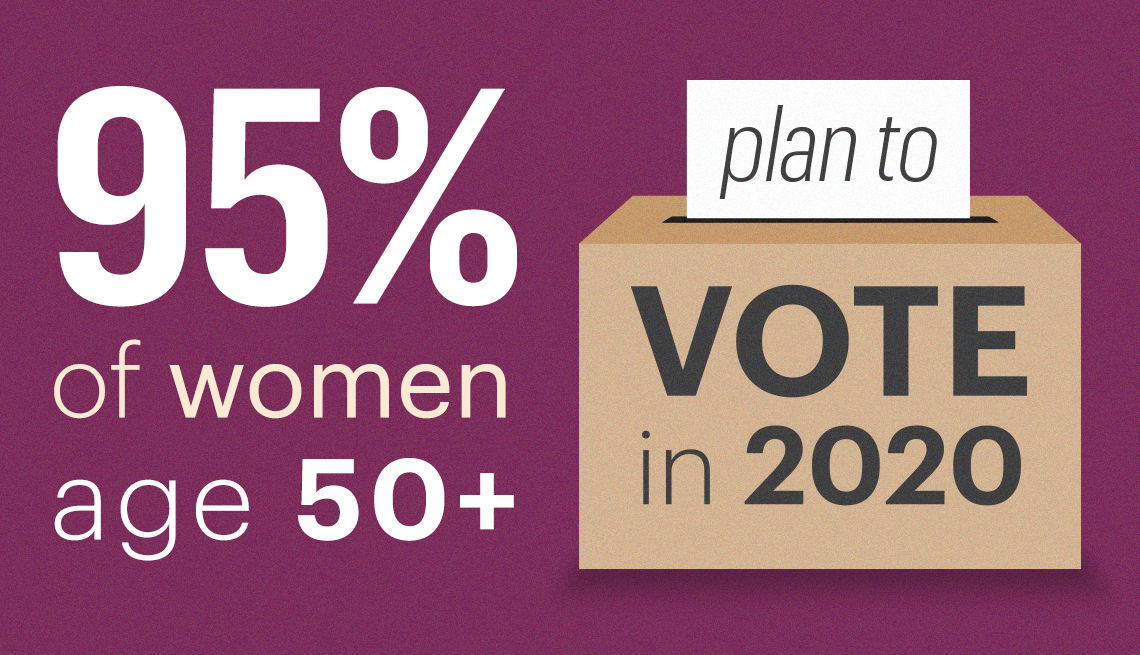
AARP
En español | The path to victory for candidates in the 2020 elections will run through women age 50 and older, according to a new AARP poll that finds 95 percent of older women plan to cast a ballot in November. The survey shows that these voters are engaged, motivated and plan to closely scrutinize the positions of those seeking their support on such pivotal issues as health care and the economy.
“We think this poll is important because it shows women are going to be a decisive voice in the 2020 election,” says Nancy LeaMond, AARP executive vice president and chief advocacy and engagement officer. “This tells us that the candidates better be focused on what older women care about in this election.” And the data clearly shows, LeaMond adds, that “we’ve moved to an era in this election where the old ‘It’s the economy, stupid’ axiom has given way to: ‘It’s health care, stupid.’”
The Harris Poll conducted the survey for AARP. It’s the first in AARP’s “She’s the Difference” series that will continue through the 2020 election season.
This research proves that “women are coming out,” says Tawny Saez, senior strategist at Harris, who says the response that 95 percent of women age 50 and over plan to vote “is one of the highest I’ve ever seen. Women 50-plus have been an overlooked group you cannot overlook any longer.” According to April, 2019 U.S. Census data, women over the age of 50 comprise 28 percent of all registered voters.
Among the 95 percent of women voters who say they are likely to vote, 87 percent say they are very likely. Only 1 percent say they do not plan to vote. This obvious interest in the 2020 election tracks with other recent polls and the analyses of election experts who are predicting that the 2020 turnout will be one of the highest in American history.
The poll was conducted online from Nov. 8 to Nov. 25 among 3,151 registered voters age 50 and over, including 1,924 women. Here is a look at some of the other key findings of this survey.
1. Women age 50+ are mostly undecided
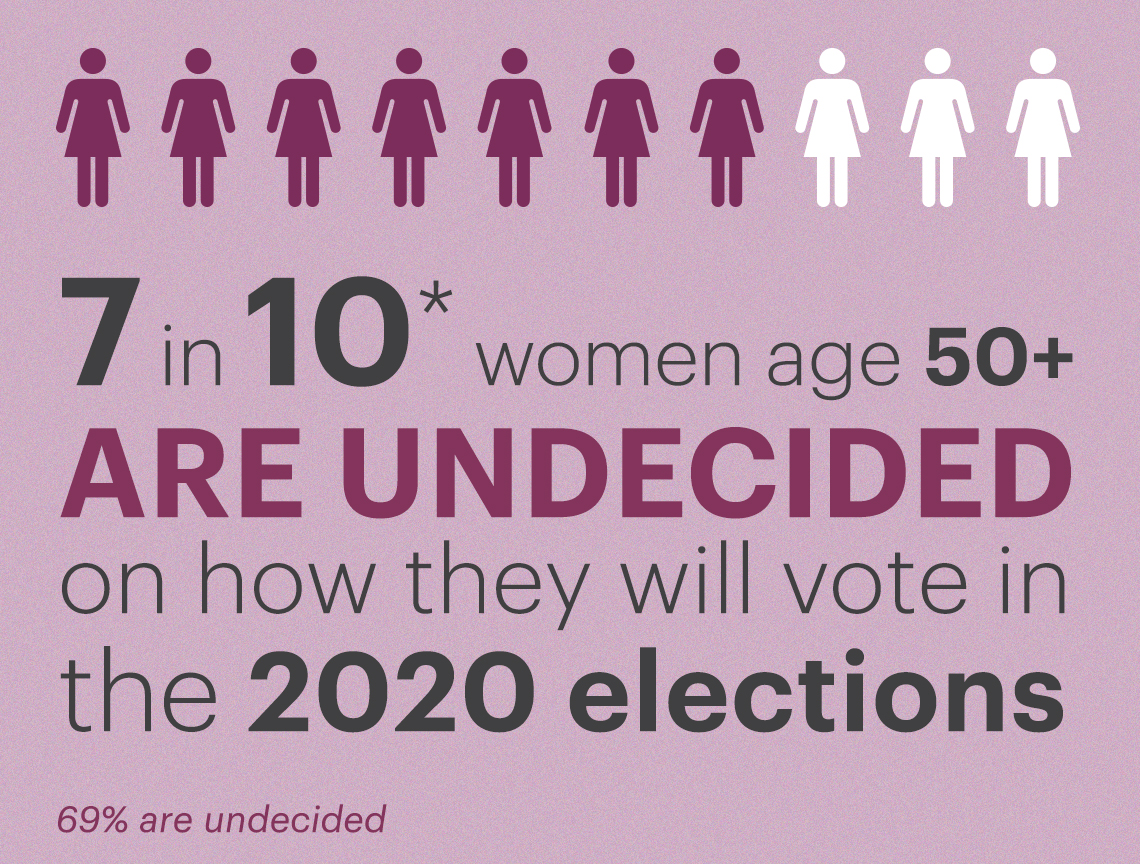
AARP
“The fact that so many women are still undecided goes to show how important this election is for them,” says Saez. The current candidates have not convinced women age 50 and older that they’ll make sufficient progress on the issues they care about, she says, especially health care and the economy. “There’s almost a fear of electing another leader that is not going to move the needle on issues that will affect their daily lives.”
Of women 50+ who say they’re likely to vote in November, 22 percent say they’ll probably make up their minds several months before Election Day and 11 percent expect to decide on Election Day. Those findings were virtually the same among African American, Hispanic and suburban women. Slightly more men in that age group — 37 percent compared to 31 percent of women — say they’ve already made up their mind about who to support.
2. Many cannot afford health care
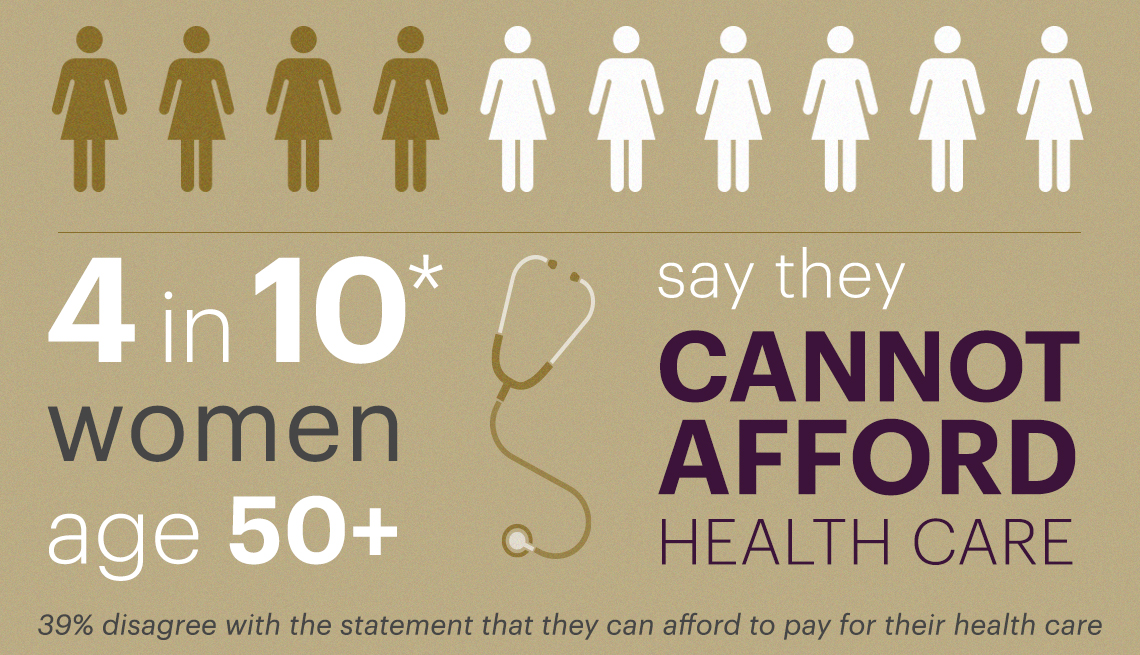
AARP
“Politicians need to start thinking from the woman’s point of view on these key issues,” Saez says. “How are they being impacted by rising health care costs? Why is health care so important to them?”
Twenty-six percent of women polled say they skipped medical care because it was too expensive and 14 percent say they went into debt because of high health care costs. Women also believe older Americans are being taken advantage of when it comes to health costs. Nearly 7 in 10 feel older people pay too much for health care compared to others, and 85 percent say people with preexisting conditions should not have to pay more for their health care coverage.
3. Women 50+ most value ethics and trust in their leaders
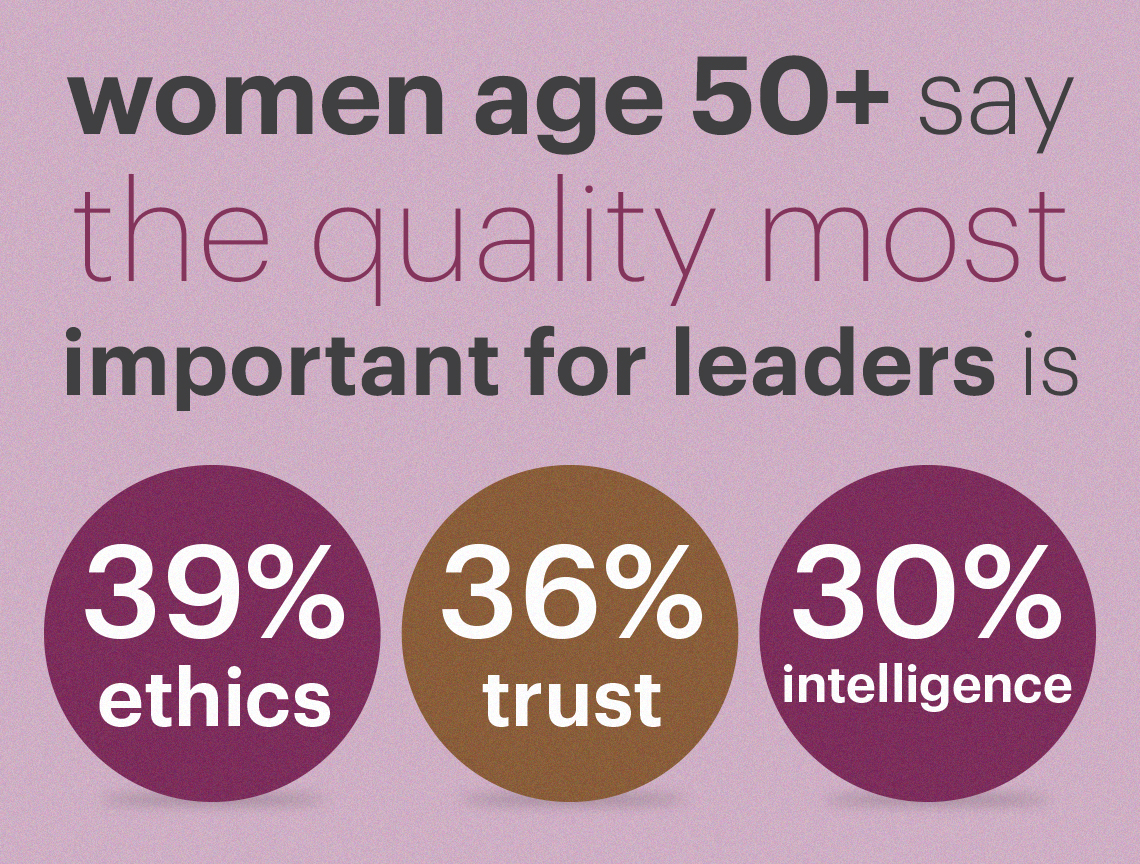
AARP
“The whole question of values is increasingly important to voters,” says LeaMond. “People want to be represented by people they can trust and people who they believe are operating in their interests, and that’s apparent in this data.” This is particularly important to women, LeaMond says, “particularly as they have all this economic anxiety. And that economic anxiety drives a whole set of questions about which candidate is really delivering for me, not just saying something, but doing something.”
In addition to women looking for elected officials who are ethical, trustworthy and intelligent, 45 percent of those polled say they would prefer an experienced candidate in 2020 over one who brings a fresh perspective (32 percent) to the nation’s issues.
4. Almost half say elected leaders are failing on health care
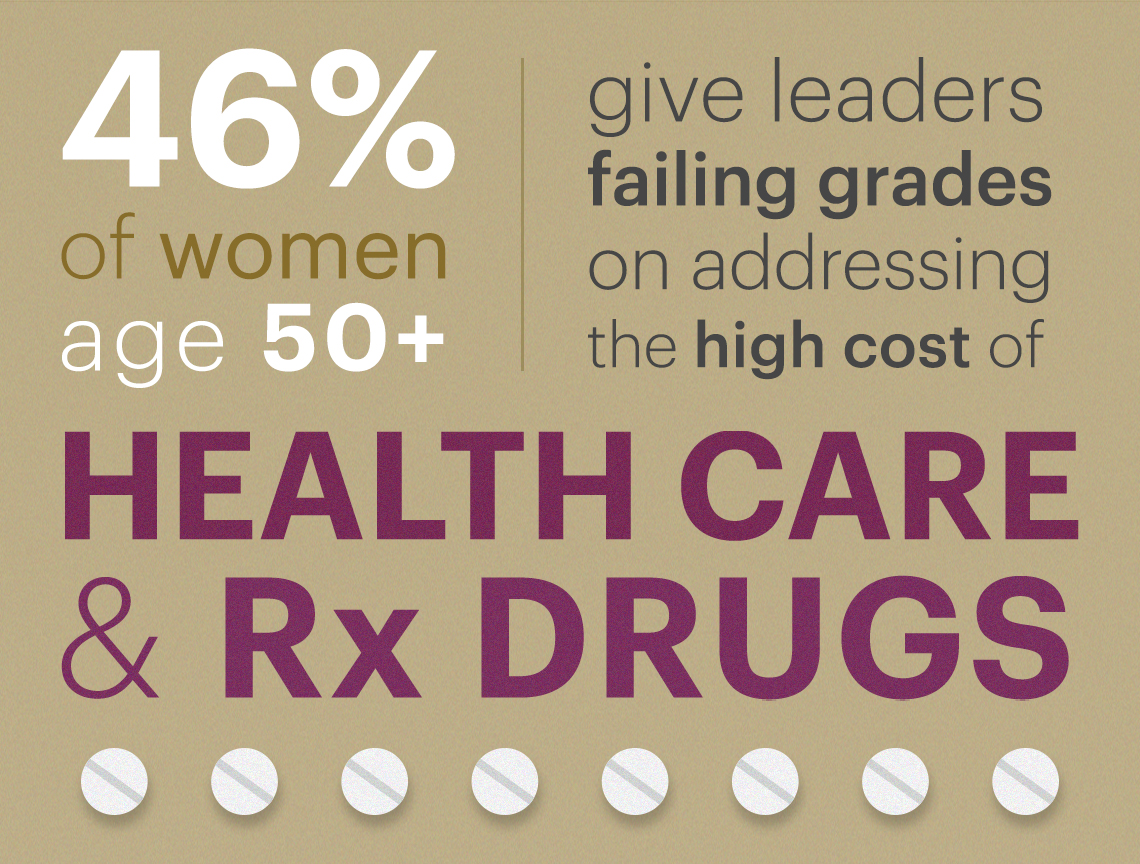
AARP
“Over and over we’re seeing a lot of conflict in elected leaders’ ability to address this issue,” says Saez. Women have such a high standard in terms of expectations of change, and there has been little movement on the cost of health care and prescription drugs.” Women, she says, “haven’t seen change in their households.”
Overall, a majority of women (56 percent) 50 and over report an unfavorable opinion of national elected leaders, including the president and members of Congress from both parties. Thirty-six percent also give them failing grades in handling the opioid epidemic, 34 percent on handling prices rising faster than income and 32 percent on the affordability of college and student debt.
5. Nearly half of 50+ women also think the economy is on the wrong track
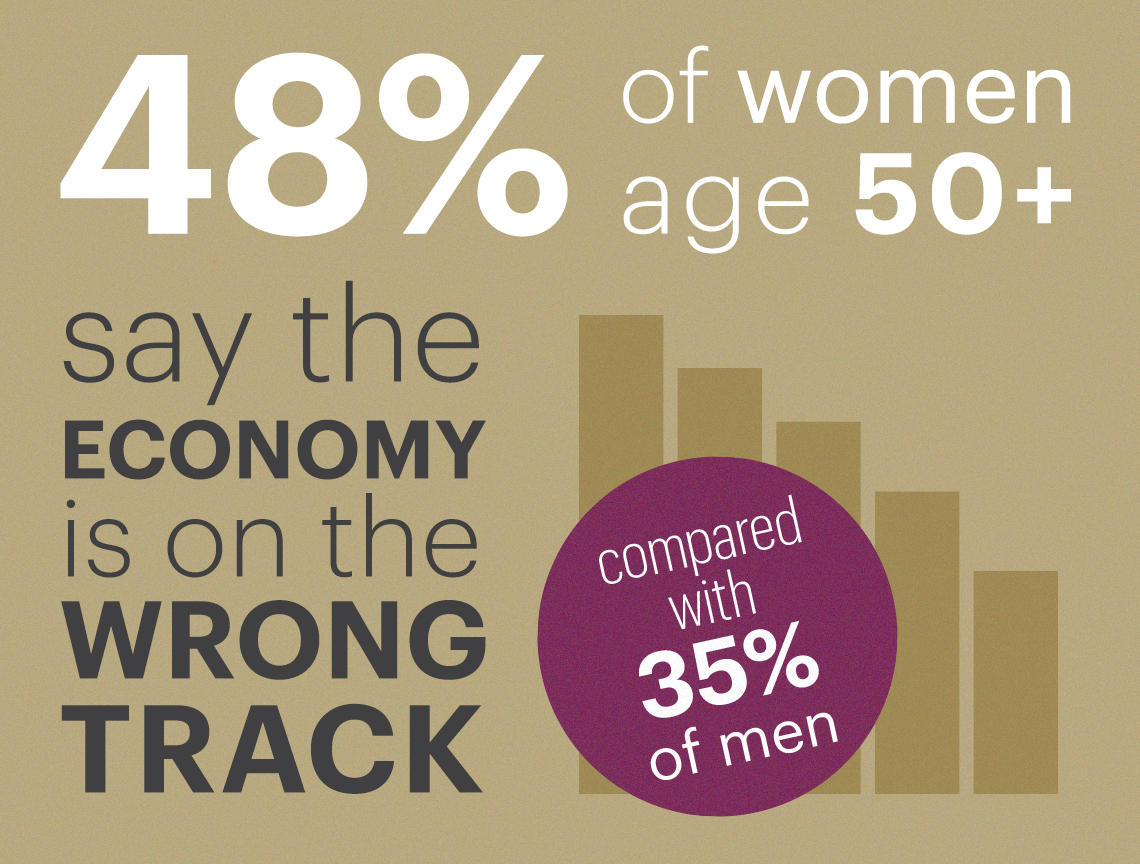
AARP
The poll shows that 50-plus women are not optimistic about their personal economic prospects. Of those surveyed, only 24 percent expect their personal financial situation to improve in the next 12 months versus 38 percent of men. This lack of confidence in the economy is also dragging down women’s prospects for retirement. While 62 percent of men over age 50 polled are confident they will live comfortably in retirement, only 47 percent of woman have that same belief.
“Women are more economically challenged,” says LeaMond. “They are typically more often in lower wage jobs. They’ve taken time out of the workforce either for child rearing or caregiving. And they are more concerned about age discrimination in the workplace. All of those things drive them to be very concerned about the economy’s impact on them.”
6. They’re down on drug companies
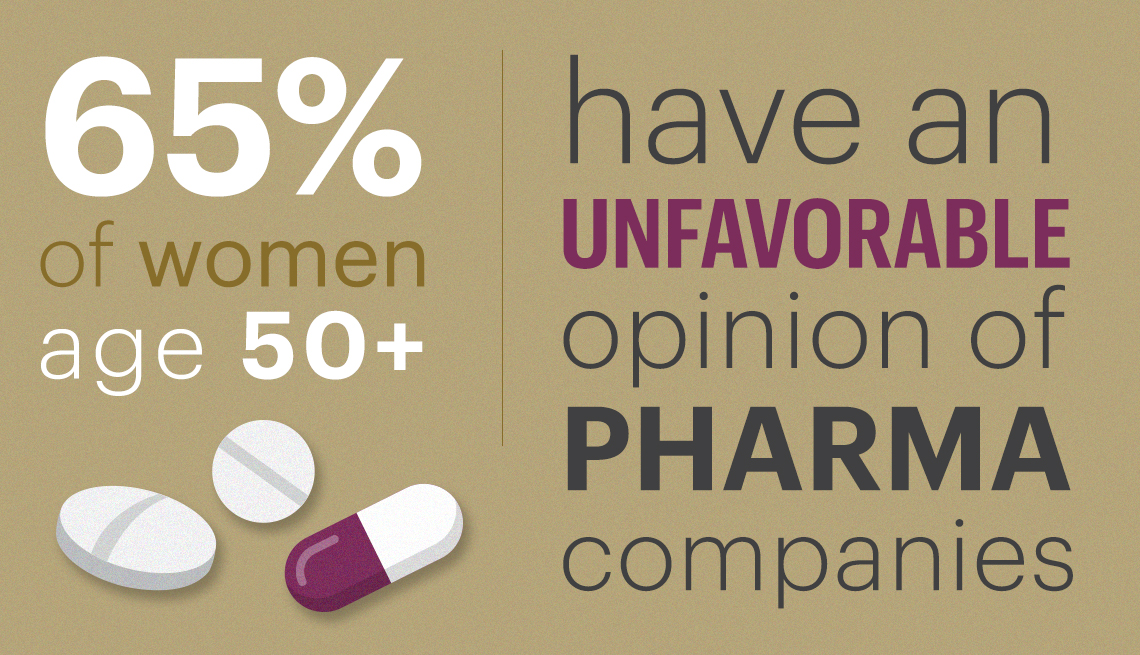
AARP
AARP research has found that older adults take between four and five medications each day and that many have to decide between taking their drugs as prescribed and affording such daily necessities as food and lodging. In this poll, 13 percent of women 50 and over report rationing their medications because of the cost.
That 65 percent of women have an unfavorable opinion on pharmaceutical companies “says to me that health care costs are top of mind and that women as the family navigators of the health care system know where those high costs are,” says LeaMond. For the past year, AARP has waged a Stop RxGreed campaign, designed to convince state and federal lawmakers to enact measures to lower the cost of prescription drugs for older Americans and all consumers.
7. Women 50+ are the chief health care officers of their families
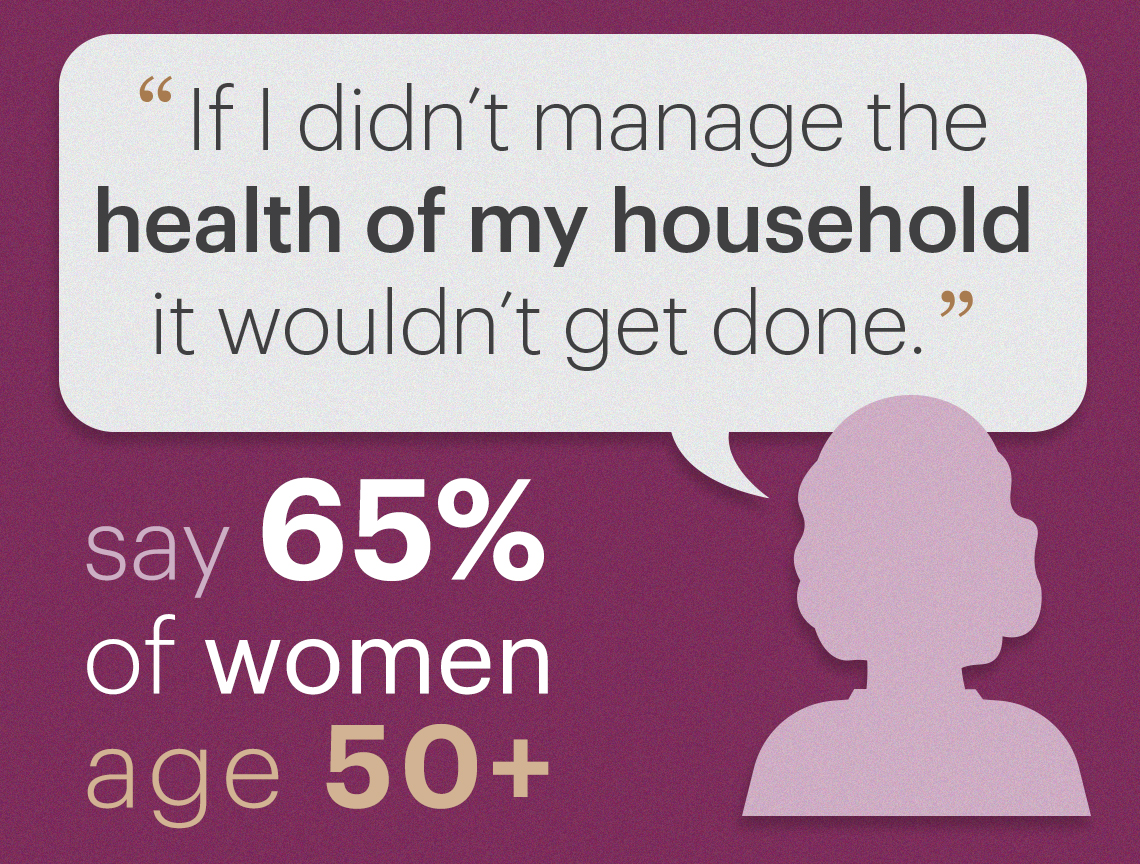
AARP
“Women are the deciders and the CEO of the household,” says LeaMond. “They are making most of the economic decisions and most of the health care decisions.” Of those women polled, 57 percent of women say they prioritize the health of their family over their own and 58 percent report being the sole health care decision-maker in their household.